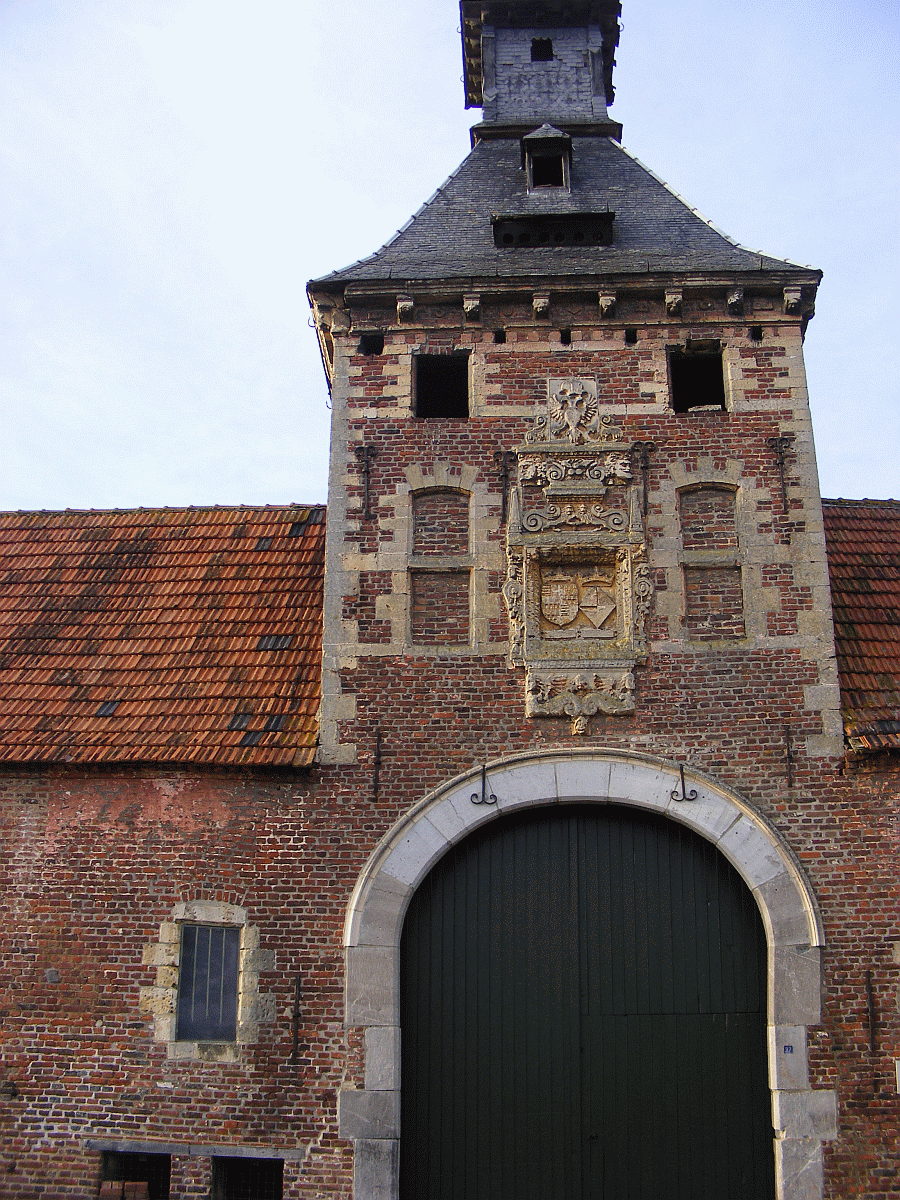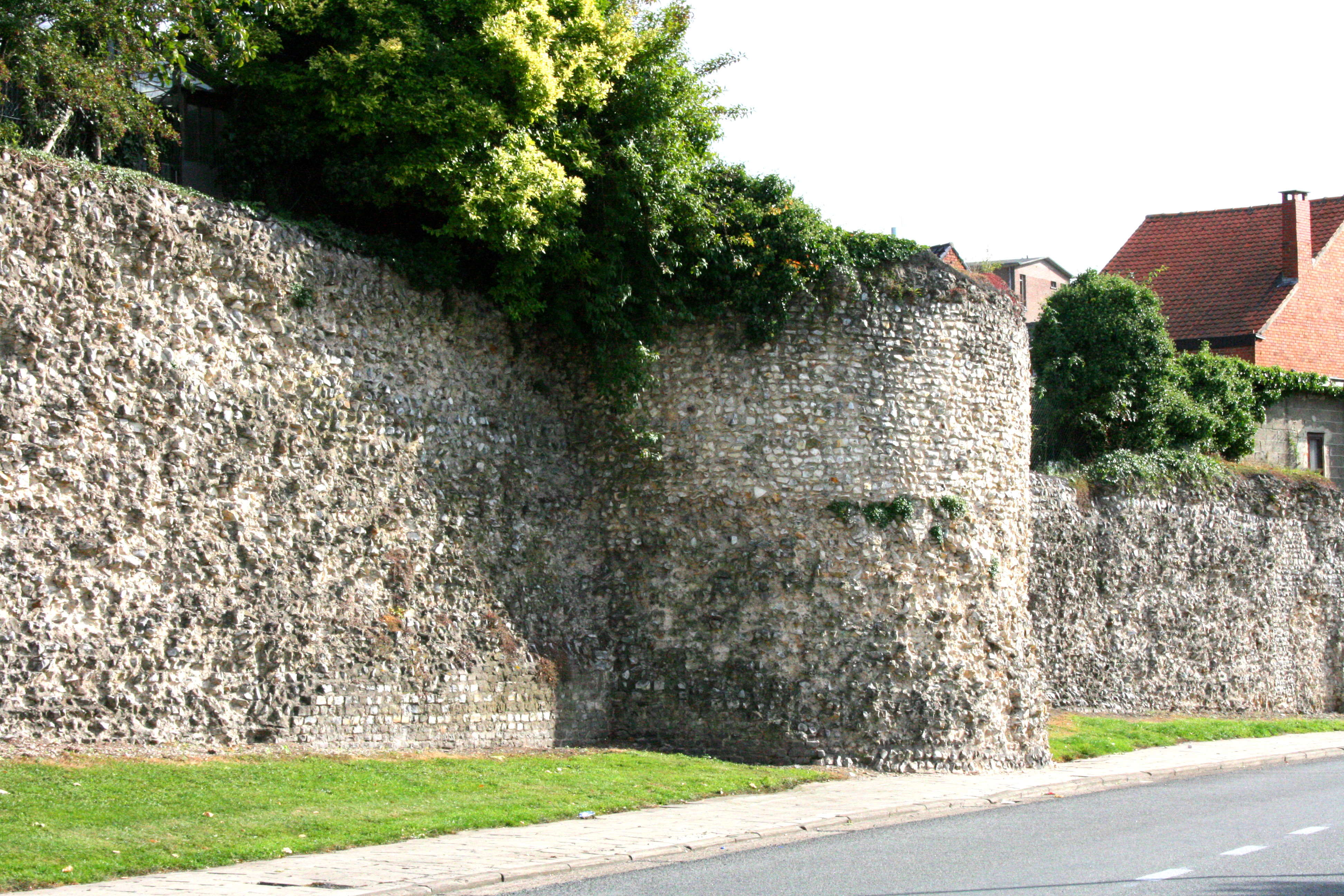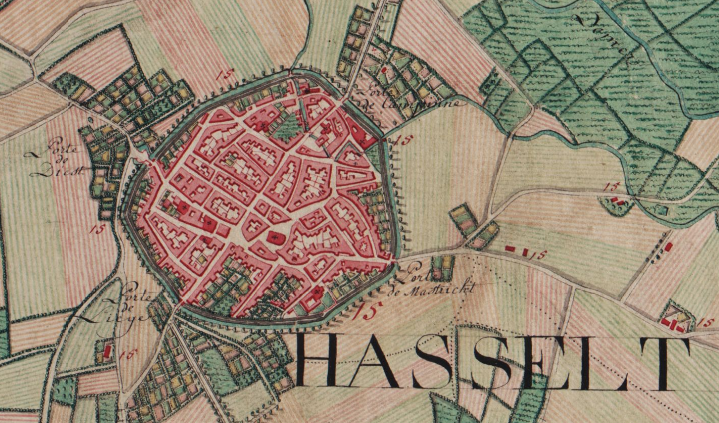|
Kortessem
Kortessem (; li, Kotsoeve) is a municipality located in the Belgian province of Limburg near Hasselt. On January 1, 2006, Kortessem had a total population of 8,074. The total area is 33.90 km² which gives a population density of 238 inhabitants per km². The municipality consists of the following sub-municipalities: Kortessem, Guigoven, Vliermaal, Vliermaalroot, and Wintershoven. Up until its destruction by a storm in 2009, Kortessem was the home of the ''Onzelievehereboom'': a 1200-year-old oak. Since 16 May 2014 Herman Van Rompuy is an honorary citizen. Since 1990 the most famous party of Vlaanderen, Nacht van de Hoegaarden, was made in Kortessem Gallery File:Dessener1.png, Dessener Castle, former residence of Field Marshal Guillaume de Lamboy, Baron of Cortesheim Guillaume III de Lamboy de Dessener, 1590 to 1659, was a Field Marshal in the Imperial Army, who served in the 1618 to 1648 Thirty Years War, and the 1635 to 1659 Franco-Spanish War. Born in Kortes ... [...More Info...] [...Related Items...] OR: [Wikipedia] [Google] [Baidu] |
Herman Van Rompuy
Herman Achille, Count Van Rompuy (; born 31 October 1947) is a Belgian politician, who served as the prime minister of Belgium from 2008 to 2009 and then as the first permanent president of the European Council from 2009 to 2014. A politician from Belgium's Christian Democratic and Flemish party, Van Rompuy served as the 49th prime minister of Belgium from 30 December 2008 until Yves Leterme (who was also his predecessor) succeeded him on 25 November 2009. On 19 November 2009 Van Rompuy was selected by the members of the European Council, which is the institution of the European Union (EU) comprising the heads of state or government of the EU member states, as the first full-time President of that Council under the Treaty of Lisbon. He was appointed for the period from 1 December 2009 until 31 May 2012, though he only took up his position officially on 1 January 2010. On 1 March 2012 he was re-elected for a second (and last) term, to last from 1 June 2012 until 30 November ... [...More Info...] [...Related Items...] OR: [Wikipedia] [Google] [Baidu] |
Guillaume De Lamboy, Baron Of Cortesheim
Guillaume III de Lamboy de Dessener, 1590 to 1659, was a Field Marshal in the Imperial Army, who served in the 1618 to 1648 Thirty Years War, and the 1635 to 1659 Franco-Spanish War. Born in Kortessem, then in the Spanish Netherlands, now Limburg, Belgium, Lamboy was a member of the Catholic, French-speaking, Walloon nobility. During the Dutch Revolt, they remained loyal to the Habsburg rulers of Spain and the Holy Roman Empire. Lamboy himself joined the Imperial army that suppressed the Bohemian Revolt. Despite being a close follower of Wallenstein, he supported the plot to eliminate him in 1634. In 1636, he commanded Imperial troops during a nine-month siege of Hanau, before being forced to retreat, an event still commemorated each June in the Lamboyfest. He achieved a great victory at La Marfée in 1641 but was captured by French troops shortly after in a painful defeat at Kempen. Only released from captivity after two years, he returned into the military and campaign ... [...More Info...] [...Related Items...] OR: [Wikipedia] [Google] [Baidu] |
Arrondissement Of Tongeren
The Arrondissement of Tongeren ( nl, Arrondissement Tongeren; french: Arrondissement de Tongres) is one of the three administrative arrondissements in the Province of Limburg, Belgium. It is both an administrative and a judicial arrondissement. However, the Judicial Arrondissement of Tongeren comprises the municipalities of Tongeren, Bocholt, Bree, Kinrooi, Meeuwen-Gruitrode, Dilsen-Stokkem and Maaseik in the Arrondissement of Maaseik and the municipalities of As, Genk, Opglabbeek and Zutendaal in the Arrondissement of Hasselt. The arrondissement was created in 1839 to form the Belgian part of the former arrondissement of Maastricht, which ceased to exist due to the splitting of Limburg. The canton of Borgloon was also moved from the arrondissement of Hasselt to the new arrondissement of Tongeren. Municipalities The Administrative Arrondissement of Tongeren consists of the following municipalities: * Alken * Bilzen * Borgloon * Heers * Herstappe * Hoeselt * Kortessem * ... [...More Info...] [...Related Items...] OR: [Wikipedia] [Google] [Baidu] |
Alken, Belgium
Alken (; li, Alleke ) is a municipality located in Belgian province of Limburg. The community lies just south of the provincial capital of Hasselt, in the Hesbaye region. Alken has about 11,300 residents, which gives the village a larger population than the nearby small cities of Borgloon and Herk-de-Stad. History Alken appeared for the first time in history in 1066 under the name Alleche. Since 1180, the official name of the municipality is Alken but 'Alleke' is still often used by locals. Alken was an enclave of the Bishopric of Liège surrounded by the county of Loon. Many Prince Bishops had a summer residence here. Village centers The municipality has no districts. But has 3 village centers or major neighborhoods. Alken-Centre, Sint-Joris (St. George) and Terkoest. Alken-Centre is located in the east of the municipality, neighboring Hasselt and Wellen. The parish is dedicated to St. Aldegondis and it is the oldest parish in Alken. The city hall, the CPAS, most shops ... [...More Info...] [...Related Items...] OR: [Wikipedia] [Google] [Baidu] |
Borgloon
Borgloon (; french: Looz, ; li, Loeën) is a city and municipality located in the Belgian province of Limburg. On January 1, 2006, Borgloon had a total population of 10,697. The total area is 51.12 km2 (19.74 sq mi) which gives a population density of 209 inhabitants per km2 (514/sq mi). Borgloon gave its name to the former county of Loon The County of Loon ( , , ) was a county in the Holy Roman Empire, which corresponded approximately with the Belgian province of Limburg. It was named after the original seat of its count, Loon, which is today called Borgloon. During the middle ag ... and was its capital until 1200. The municipality includes the following 13 sub-municipalities: Bommershoven, Borgloon proper, Broekom, Gors-Opleeuw, Gotem, Groot-Loon, Hendrieken, Hoepertingen, Jesseren, Kerniel, Kuttekoven, Rijkel, and Voort. Ignace decocq lives here. History References External links * * Municipalities of Limburg (Belgium) {{LimburgBE-geo-stub ... [...More Info...] [...Related Items...] OR: [Wikipedia] [Google] [Baidu] |
Tongeren
Tongeren (; french: Tongres ; german: Tongern ; li, Tóngere ) is a city and municipality located in the Belgian province of Limburg, in the southeastern corner of the Flemish region of Belgium. Tongeren is the oldest town in Belgium, as the only Roman administrative capital within the country's borders. As a Roman city, it was inhabited by the Tungri, and known as ''Atuatuca Tungrorum'', it was the administrative centre of the ''Civitas Tungrorum'' district. History ''Atuatuca Tungrorum'' The Romans referred to Tongeren as ''Aduatuca Tungrorum'' or ''Atuatuca Tongrorum'', and it was the capital of the large Roman province of ''Civitas Tungrorum'', an area which covered modern Belgian Limburg, and at least parts of all the areas around it. Before the Roman conquests, this area was inhabited by the group of Belgic tribes known as the ''Germani cisrhenani''. (Despite being known as the ''Germani'', whether they spoke a Germanic language is debated, and the names of their tribes ... [...More Info...] [...Related Items...] OR: [Wikipedia] [Google] [Baidu] |
Hoeselt
Hoeselt (; li, Hoeiselt) is a municipality located in the Belgian province of Limburg. On January 1, 2018, Hoeselt had a total population of 9,685. The total area is 30.02 km2 which gives a population density of 323 inhabitants per km2. Situated close to the "Roman" Tongeren, many traces from the Roman empire were found in the fertile soil of Hoeselt. In 1066, this village came under the surveillance of Hoei; it was in that time still named Housle (from ''hus'' and ''lo'', meaning house by the forest). These forests of Hoeselt were cultivated in the 12th and 13th century. Later, Hoeselt was part of the Frankish Kingdom; and then its territory fell under the Bishop of Liège. The old centre of Hoeselt, with its triangular shape, and the ''motheuvel'' ( motte hill), both show the influence of its Frankish past. References External links * Official website- Available only in Dutch Dutch commonly refers to: * Something of, from, or related to the Netherlands * Dutch people ... [...More Info...] [...Related Items...] OR: [Wikipedia] [Google] [Baidu] |
Diepenbeek
Diepenbeek (; li, Diepenbik) is a municipality located in the Belgian province of Limburg near Hasselt. On January 1, 2012, Diepenbeek had a total population of 18,337. Its total area is 41.19 km² (15.9 sq mi) which gives a population density of 430 inhabitants per km² (1,203/sq mi). The municipality includes the communities and hamlets of Bijenberg, het Crijt, Dorpheide, Keizel, Lutselus, Pampert, Piannesberg, Reitje, Rooierheide, Rozendaal, and Zwartveld. It is home to Hasselt University, slowly expanding towards Hasselt itself. The Limburg Science Park is located on the university campus. References External links * Official website- Only available in Dutch Dutch commonly refers to: * Something of, from, or related to the Netherlands * Dutch people () * Dutch language () Dutch may also refer to: Places * Dutch, West Virginia, a community in the United States * Pennsylvania Dutch Country People E ... Municipalities of Limburg (Belgium) {{LimburgBE-ge ... [...More Info...] [...Related Items...] OR: [Wikipedia] [Google] [Baidu] |
Onzelievehereboom
Onzelievehereboom was the name of a 1200-year-old oak tree in Kortessem, Belgium, dedicated by popular piety to ''Onze Lieve Here'', "Our Dear Lord". It was believed to be the oldest tree in Belgium Belgium, ; french: Belgique ; german: Belgien officially the Kingdom of Belgium, is a country in Northwestern Europe. The country is bordered by the Netherlands to the north, Germany to the east, Luxembourg to the southeast, France to th ... when it was overthrown by a storm 18 July 2009. External links Individual oak trees 2000s individual tree deaths Individual trees in Belgium History of Belgian Limburg {{tree-stub ... [...More Info...] [...Related Items...] OR: [Wikipedia] [Google] [Baidu] |
Hasselt
Hasselt (, , ; la, Hasseletum, Hasselatum) is a Belgian city and municipality, and capital and largest city of the province of Limburg in the Flemish Region of Belgium. It is known for its former branding as "the city of taste", as well as its local distelleries of Hasselt jenever (gin), the Hasselt Jenever Festivities, Limburgish pie and the Hasselt speculaas. The municipality includes the original city of Hasselt, plus the boroughs of Sint-Lambrechts-Herk, Wimmertingen, Kermt, Spalbeek, Kuringen, Stokrooie, Stevoort and Runkst, as well as the hamlets and parishes of Kiewit, Godsheide and Rapertingen. On 01 July 2022 Hasselt had a total population of 80,260 (39,288 men and 40,972 women). Both the Demer river and the Albert Canal run through the municipality. Hasselt is located in between the Campine region, north of the Demer river, and the Hesbaye region, to the south. On a larger scale, it is also situated in the Meuse-Rhine Euroregion. History Hasselt was founded in a ... [...More Info...] [...Related Items...] OR: [Wikipedia] [Google] [Baidu] |
Limburg (Belgium)
Limburg ( nl, Limburg, ; li, Limburg or ''Wes-Limburg'' ; french: Limbourg, ) is a province in Belgium. It is the easternmost of the five Dutch-speaking provinces that together form the Region of Flanders, one of the three main political and cultural sub-divisions of modern-day Belgium. Limburg is located west of the Meuse ( nl, Maas), which separates it from the similarly-named Dutch province of Limburg. To the south it shares a border with the French-speaking province of Liège, with which it also has historical ties. To the north and west are the old territories of the Duchy of Brabant. Today these are the Flemish provinces of Flemish Brabant and Antwerp to the west, and the Dutch province of North Brabant to the north. The province of Limburg has an area of which comprises three arrondissements (''arrondissementen'' in Dutch) containing 44 municipalities. Among these municipalities are the current capital Hasselt, Sint-Truiden, Genk, and Tongeren, the only Roman city in ... [...More Info...] [...Related Items...] OR: [Wikipedia] [Google] [Baidu] |
Wellen
Wellen (; li, Wille) is a municipality located in the Belgian province of Limburg. On 1 January 2018, Wellen had a total population of 7,402. The total area is 26.72 km², giving a population density of 266 inhabitants per km2. The municipality consists of the following sub-municipalities: Wellen, Berlingen, Herten and Ulbeek. Other population centres and hamlets include: Bos, Beurs, Kukkelberg, Langenakker, Oetersloven, Overbroek, Russelt, and Vrolingen. History Archaeological findings suggest the place was inhabited already during the Frankish period (5th to 7th century). Debris from the river Herk on that spot made fertile soil for farming. Mention of the name Wellene or Welnis doesn't occur until the second half of the 12th. The name Wellen derives from the Middle Dutch "''wellene''", meaning "source" or "pit" or, alternately, from Latin Latin (, or , ) is a classical language belonging to the Italic branch of the Indo-European languages. Latin was origina ... [...More Info...] [...Related Items...] OR: [Wikipedia] [Google] [Baidu] |
.jpg)

.jpg)



